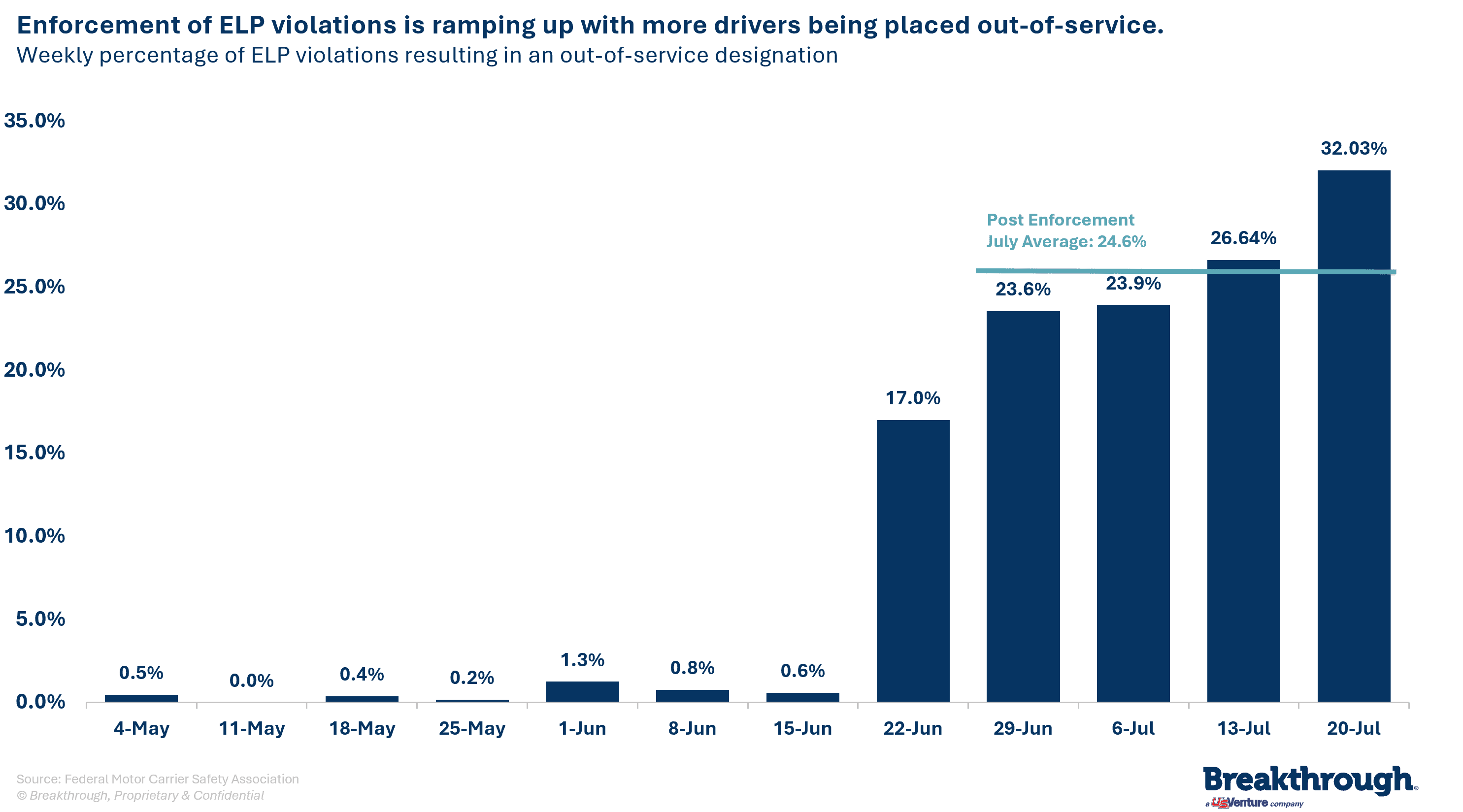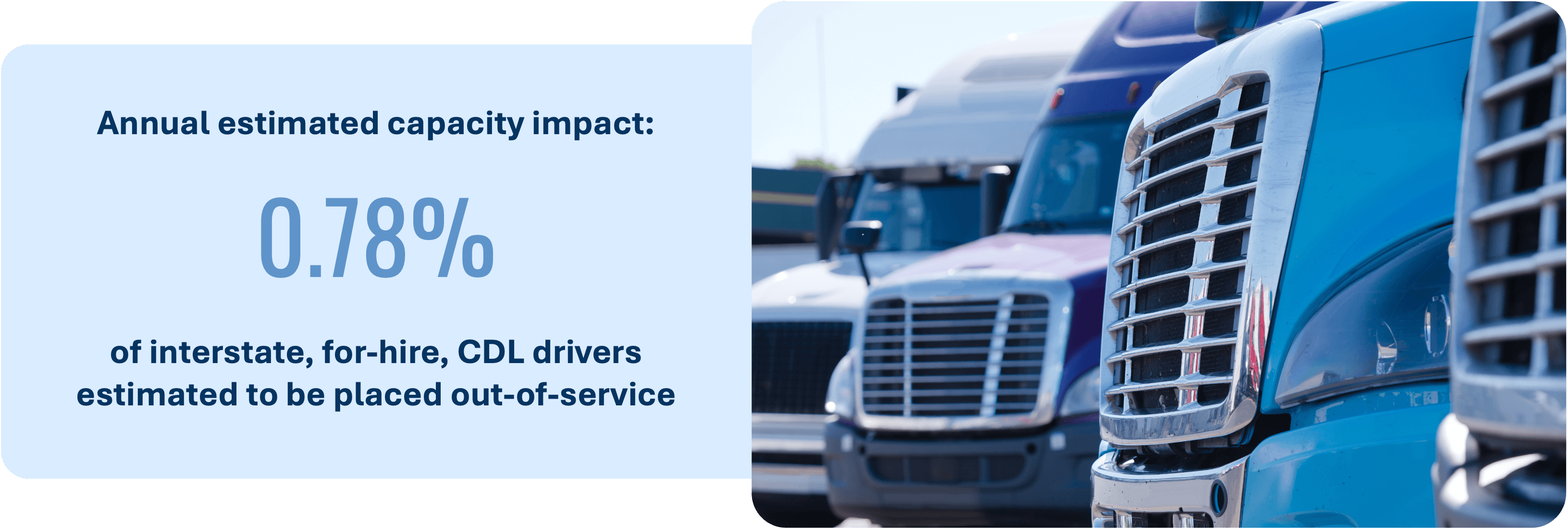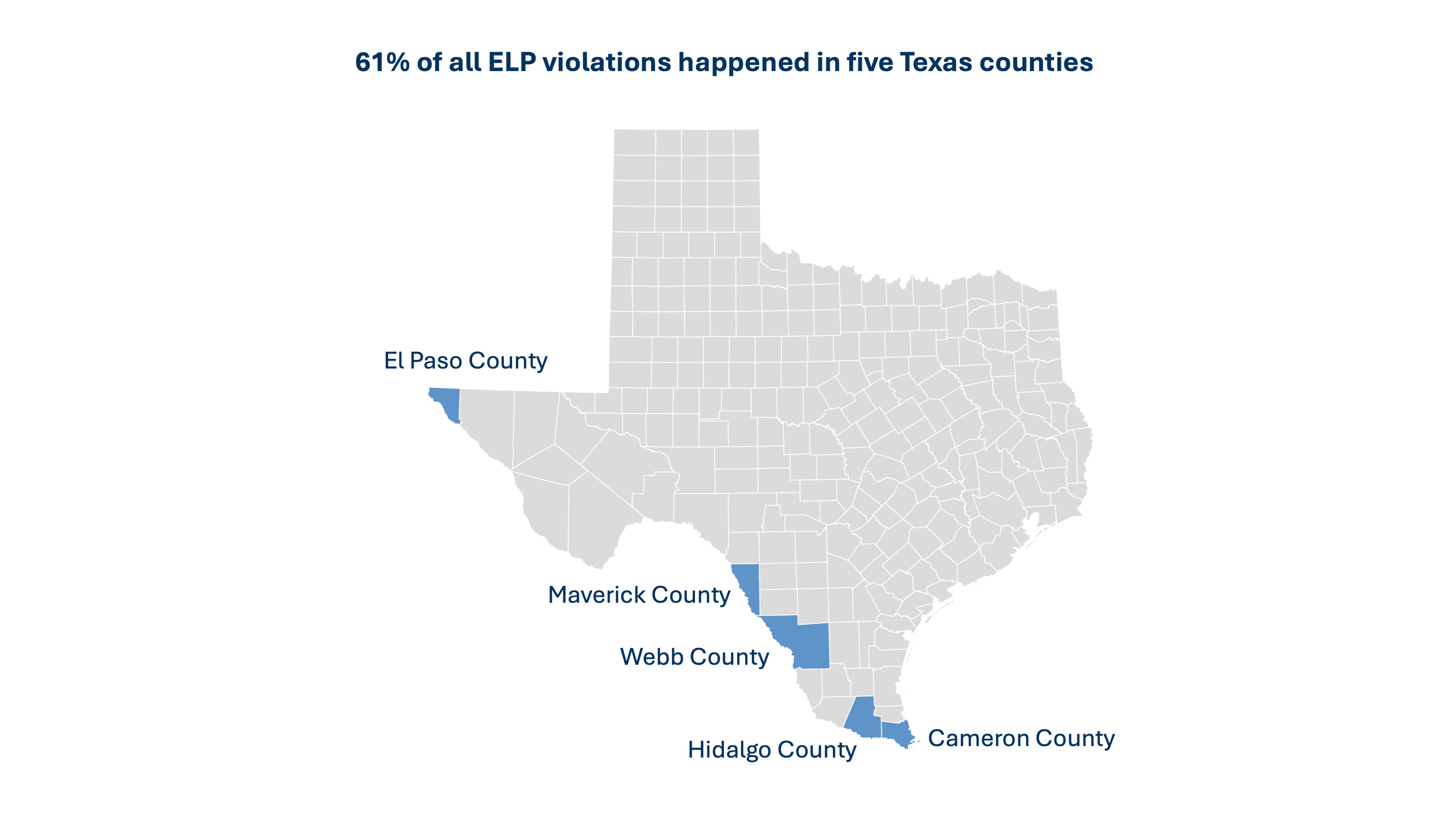Breakthrough’s Capac-ID Methodology

Trending
Top Posts
6 min read
August 22, 2025

Share:
Table of contents
Browse the table of contents to jump straight to the part you’re looking for
Recent updates to English language proficiency (ELP) regulations for truck drivers were prompted by an Executive Order signed in April 2025, which called for much stricter enforcement of these requirements. In response, the Commercial Vehicle Safety Alliance (CVSA) revised its guidelines to allow drivers to be placed out-of-service (OOS) for ELP violations, which deviates from the current policy. The CVSA has also petitioned that all CDL exams be administered exclusively in English and all drivers that previously took the CDL exam in another language be removed from service.
Since the CVSA began enforcing these new rules on June 25th, the industry has seen a sharp increase in both the number of violations and the rate at which drivers are placed OOS. While the overall national impact on available capacity is projected to remain minimal for now, based on analysis conducted by the Breakthrough Research & Economics team, the geographic concentration of violations, particularly along the Texas and Mexico border, has created localized disruptions. These developments may have implications for shippers, especially those operating cross-border lanes through high-enforcement regions.
A key question is the potential impact of these changes.
Data from the Federal Motor Carrier Safety Administration (FMCSA) shows a clear change in enforcement regarding English Language Proficiency, both in the number of violations and, more importantly, in drivers being placed OOS. Using the pool of interstate drivers with active FMCSA status who do not haul passengers and have carrier operations, the average number of weekly inspections conducted in 2024 by CVSA was 27,986. This increased to 31,246 per week from January through July 2025, an uptick of about 11.6%.

Notably, the number of ELP violations increased sharply after the new enforcement rules. In 2024, the average was 129 ELP violations per week or roughly 0.5% of inspections. After enforcement began in late June 2025, the average jumped to 843 ELP violations per week which is a 553% increase from 2024, and now represents 4.05% of all inspections.

While the rise in violations is clear, the biggest change is the increase in drivers placed OOS for ELP violations. This figure jumped from a weekly average of 0.1% to 25.7% since heavy enforcement began in late June. Previously, only one driver out of every thousand flagged with an ELP violation was placed OOS, and now, about one in every four drivers is impacted.
Understanding the impact of the ELP regulation on capacity requires careful consideration. In recent years, the freight market has experienced a recession, with stable rates due to soft demand and some excess capacity. If new enforcement guidelines significantly reduce capacity, this could place upward pressure on rates. While the future remains uncertain, analyzing recent trends and data provides valuable insight into potential outcomes.
Assuming the 2025 weekly average of 31,246 inspections holds, with 4.05% resulting in ELP violations and 25.68% of those drivers placed OOS, an average of 325 drivers would be taken out of service each week. Annualized, this means about 16,901 drivers would be placed OOS in the coming year.
According to FMCSA data, as of June 2025, there were 2,174,120 active, for-hire, interstate CDL drivers who do not haul passengers and have carrier operations. If drivers placed OOS do not return within the year, the estimated annual impact would be about 0.78% of the targeted for-hire driver population taken offline. This number is even smaller if the definition of the driver pool is expanded to a broader classification. Currently, drivers should not be able to operate a commercial motor vehicle until the condition of their removal is remedied, so it is difficult to estimate the timeline they will be OOS.

Geography is another important factor in assessing the risk of lost capacity due to the ELP regulation. Enforcement is carried out at county and state levels, and mapping violations reveals clear regional differences, with high concentrations along the US-Mexico border.
Since CVSA began enforcing the ELP requirement on June 25, there have been 8,472 ELP violations as of the end of July. State-level data shows that 64.7% of all ELP violations occurred in Texas, with Arizona following at 8.52%. Digging deeper, 61% of all ELP violations happened in five Texas counties: Webb, El Paso, Cameron, Hidalgo, and Maverick. Notably, Webb County is responsible for 25.6% of all the ELP violations that occurred in the country across this time period.

The ELP regulation has resulted in a significant increase in the average number of violations, jumping from 0.5% to 4.05% in a little over a month. More notably, the ratio of drivers placed OOS due to an ELP violation rose from about one in 1,000 drivers before the policy change to an average of one in every four drivers after enforcement began.
Despite the policy shift, the current estimates suggest this would result in an estimated 0.78% of drivers being placed out of service annually which represents a supply-side shock that could apply slight upward pressure on linehaul rates. However, Breakthrough’s current freight forecasts project a minimal effect based on these trends. While the national impact is projected to be limited, shippers operating cross-border lanes with Mexico through Texas face a higher likelihood of disruption, with roughly 65% of all ELP violations since enforcement began occurring in that region.
While the broader national impact of ELP enforcement is expected to remain minimal, it’s crucial for shippers, particularly those with cross-border shipments through high-risk regions like Texas and Mexico to stay informed and proactive. Mitigating potential disruptions with asset-based carriers can make a significant difference in your network performance. If you want more expertise on navigating these challenges, connect with one of our experts today and discover how Capac-ID can support and optimize your network.

5 min read
January 2, 2026
Stay ahead of Q1 2026 diesel fuel tax by state adjustments. See how changes in states like MI and NJ will impact your transportation spend.
Read more
6 min read
January 1, 2026
Learn what a fleet card is, how they work, and the top fleet card benefits. Our guide explains how the right fleet card program can save you money.
Read more
5 min read
December 31, 2025
Discover how to implement a mobile fueling program that boosts fleet efficiency and cuts costs. Our guide covers evaluation, partner selection, and integration.
Read more